Raybel Charters: Community restoration project of a 100-year-old Thames Sailing Barge
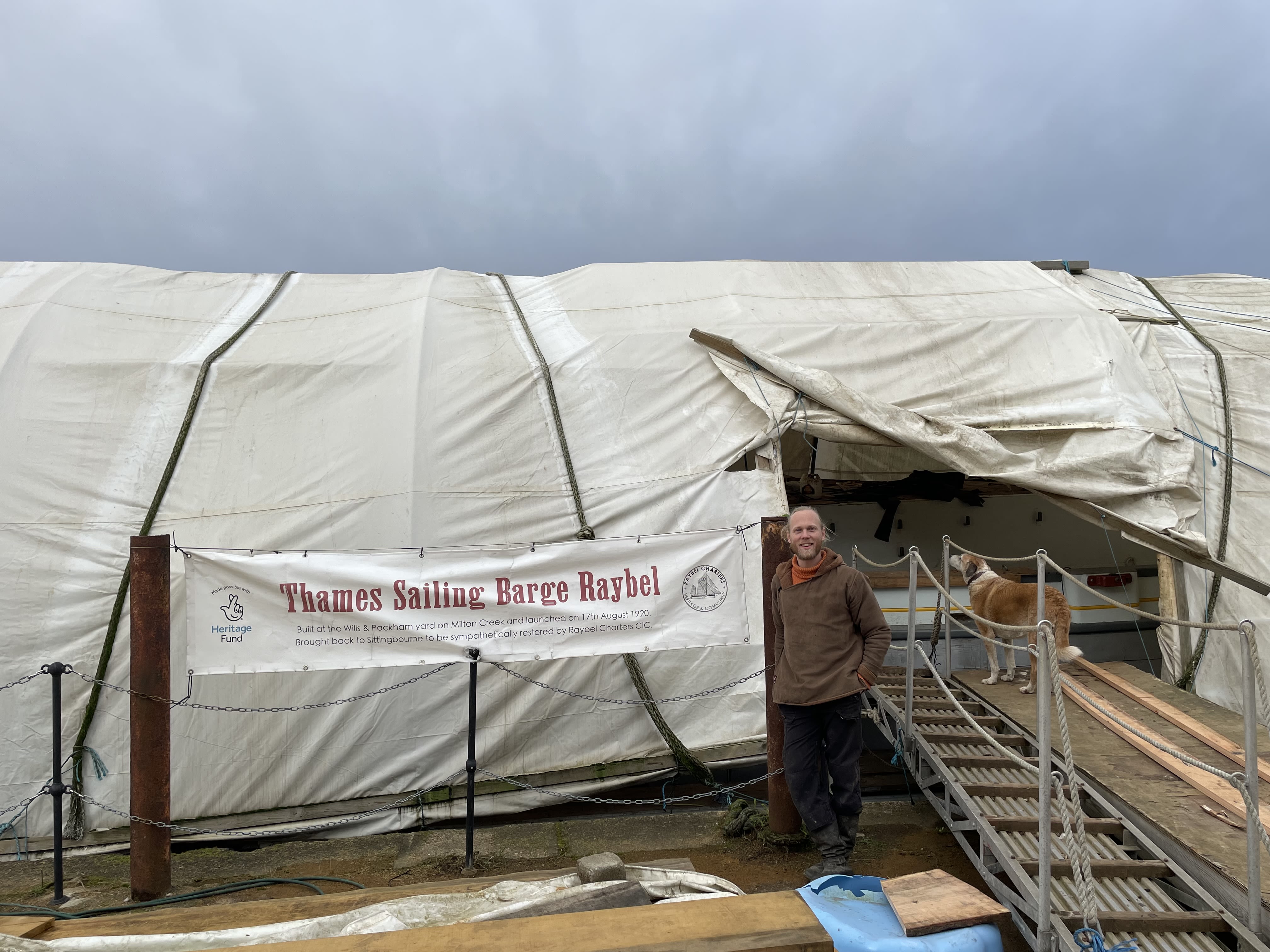
Thames Sailing Barge Raybel | Credit: Floris de Bruin
Thames Sailing Barge Raybel | Credit: Floris de Bruin
Raybel Charters, a maritime heritage social enterprise based in Sittingbourne, won the ‘Best Community Engagement Initiative’ at the National Maritime Awards 2023 in October.
The award commemorates their commitment to nautical culture by restoring a 100-year-old Thames Sailing Barge, the Raybel, with plans to put it into operational use next year.
Raybel is set to transport goods such as chocolate and coffee from Kent to London, offering a clean alternative to shipping powered by bunker fuel.
Part business, part campaign, part arts project, the team’s wider project is geared towards supporting the regeneration of Lloyd’s Wharf and training the next generation of shipwrights.
Raybel’s History
Commissioned by barge owners G.F. Sully, Raybel was launched at Will & Packham Yard, Milton Creek, on 14 August 1920.
Raybel’s name comes from Raymond and Isabel – born the same year to the Sully family – and was used by the family for summer holidays.
Throughout the 1920s and 30s, Raybel transported hay, wheat, timber, paper and other bulky loads into London.
Thames Sailing Barges were integral to London’s trade during the early 20th century. “With their shallow, flat-bottomed hull,” said the Thames Festival Trust, “they were one of the only vessels to be able to sail along the shallow creeks of Essex and Kent.”
Following the outbreak of the Second World War, Raybel was commandeered by the Admiralty and transformed into a naval supply ship on the River Clyde, Scotland, delivering cargoes of food and general goods.
Thames Festival Trust explained that Thames Sailing Barges played a “vital” role in WWII. “Powered by wind they had no use for fuel, a valuable commodity during the war,” added the charity.
But the end of the war saw the freight transport industry completely dominated by oil, diesel and petrol. The slow nature of sail-powered cargo transport that Raybel offered was no longer considered efficient enough.
Ian Houston’s purchase in the 1970s transformed Raybel into a venue for quayside events while moored in St. Katharine Docks, London.
Adjustments and improvements to the fitting out of the galley and main hold allowed Raybel to host educational activities, theatre, fine dining, corporate hospitality, exhibitions and promotional events.
In 2011, Raybel passed into the ownership of Rob Sargent, and became a social enterprise in 2018, securing financing after being awarded the Heritage Lottery fund in 2019.
Restoration
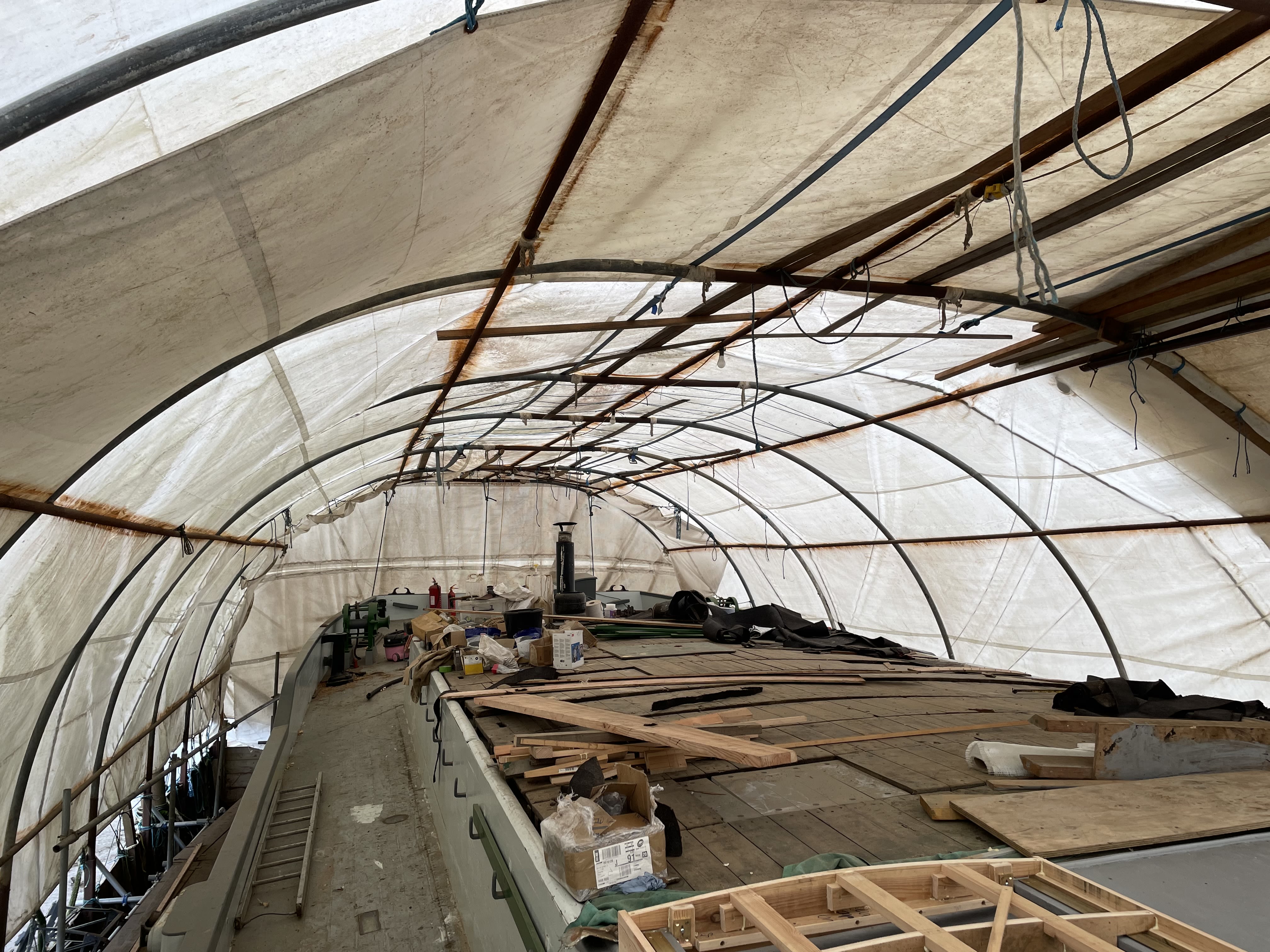
Restoration onboard the Raybel | Credit: Floris de Bruin
Restoration onboard the Raybel | Credit: Floris de Bruin
Around 30 Thames Sailing Barges remain in close to original condition today, from a fleet that once numbered two thousand, according to the Society for Sailing Barge Research.
The restoration is a unique opportunity to keep one more of these vessels in use.
Raybel is scheduled to come out of the dry dock around late summer this year and be fully operational next year.
Chris Foster, Director of Raybel Charters, said: “It’s a bit of a hair-raising moment. All the time, effort, money put into it… It’s going to be very nerve-wracking.”
Volunteers
The restoration relies on the help of many volunteers, many of them retired enthusiasts.
Mr Foster, 33, said: “We’re so pleased to have the wealth of experience that our retired volunteers bring.
“They bring such a unique understanding and passion to the project.”
Most recently, volunteers Jim, Ken, Alan and Bryan were tasked with removing and replacing over 180 corroded bolts.
Mark Allinson, Restoration Project Manager, said: “Over the last 100 years, Raybel’s bolts have corroded in the middle, making them thinner and weaker. Getting the old ones out is a nightmarish job with each taking from 30 minutes to three days to remove.
“If you pull them, they may break leaving half in the hole. If you bash them, they can break with the top half overlapping the bottom half and wedging itself firmly in.”
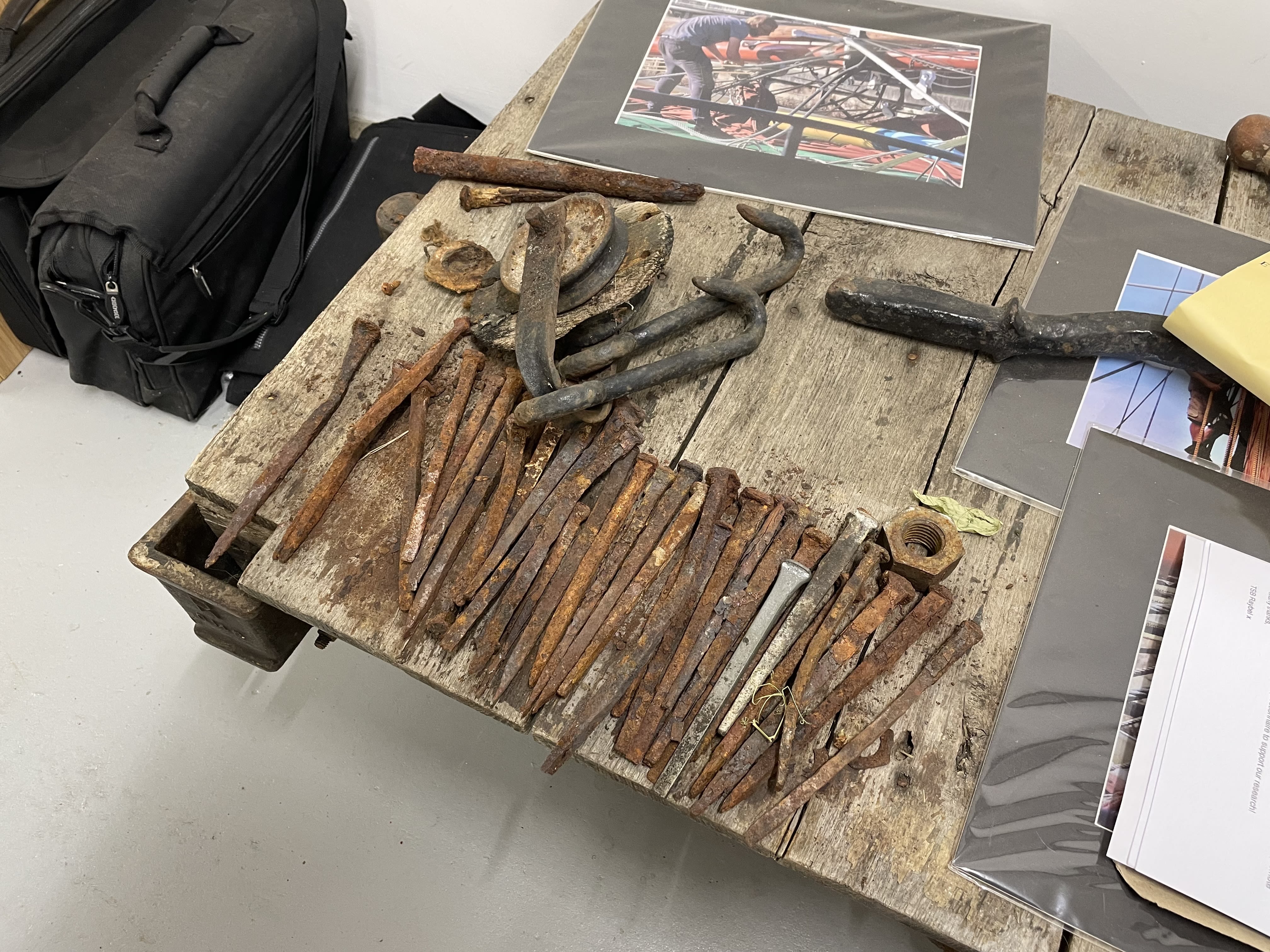
Raybel's 100-year-old bolts had to be replaced | Credit: Floris de Bruin
Raybel's 100-year-old bolts had to be replaced | Credit: Floris de Bruin
Each bolt needed its own special technique to get out, but a regular system was eventually perfected.
“The team worked on the bolts for over 40 working days before getting the last ones out in late October,” he added.
Shipwrights
Raybel’s restoration mainly depends on the expertise of its shipwrights.
Laurie Watkins from Essex started working on the Raybel around three months ago after working on another barge in St Katherine’s docks.
He has extensive experience working on Thames Sailing Barges and highlights its uniqueness compared to modern ships.
Mr Watkins, 36, said: “They’re very individual compared to the construction of modern boats.”

Raybel depends on shipwrights like Laurie Watkins | Credit: Floris de Bruin
Raybel depends on shipwrights like Laurie Watkins | Credit: Floris de Bruin
While volunteers mainly work on general, time-consuming tasks, the shipwrights are responsible for more specialised work.
“At the moment, we’re replacing the planking on the half deck and then some of the bottom of the well.
“We’re having to steam all of the timber because of the shape of them so basically, you’re having to do the job twice.
“It’s been a difficult task. It’s taken longer than we thought,” Mr Watkins added.
Education
The team revealed the critical shortage of shipwrights with the knowledge of restoring Thames Sailing Barges.
Mr Foster, from Sittingbourne, said: “There are very few shipwrights left that can restore a Thames Barge and know the intricacies of how it’s put together and what needs to be done. They are getting older, and a lot of that isn’t being passed down generations.
“There are certain jobs only our shipwright Tim knows how to do – pretty much the only one in the country. Maybe there’s three people that could do some of that work.”
Shipwright Tim Goldsack left the project after three years in October to fulfil a promise made to another barge, Sailing Barge Hydrogen.
His last task was carving a new name badge on the port side, to match the badge on the starboard side done about a year ago.
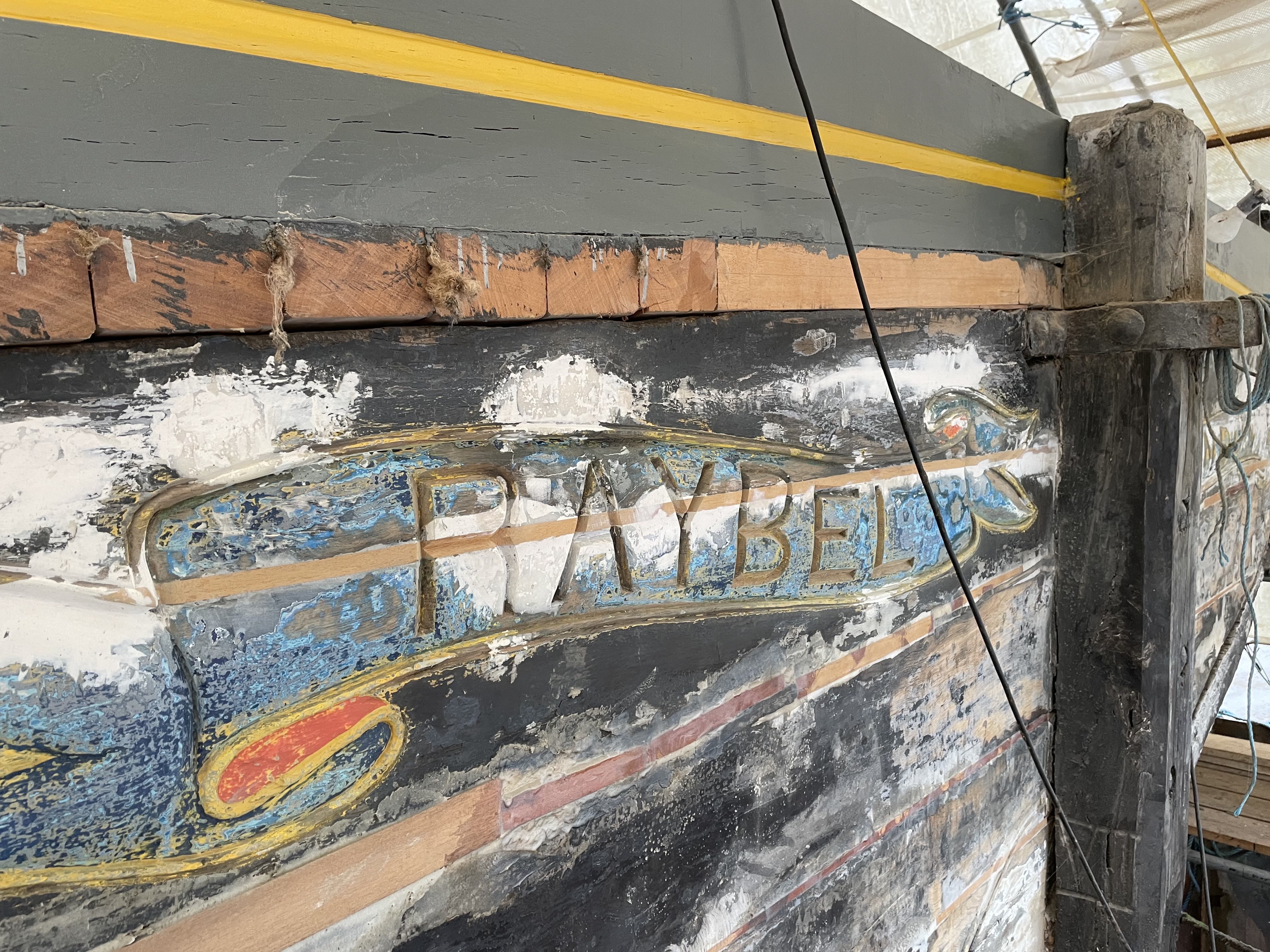
Mr Goldsack's final work on the Raybel | Credit: Floris de Bruin
Mr Goldsack's final work on the Raybel | Credit: Floris de Bruin
With the existing experts ageing, the urgency to pass down this knowledge led to initiatives to provide training and work experience for young people, staff, and volunteers.
Mr Foster added: “There’s a real threat to these skills being lost. We’re creating opportunities for anyone passionate about preserving this heritage, regardless of their background.
“We want to bring a lot of young people into this space, women, refugee communities, migrants.
“We really want to create an inclusive space because we know that Sittingbourne is a changing place, the world’s a changing place, and we are really keen to make space for everyone so everyone can get involved in the project and feel part of that story.”
Their commitment to hands-on learning is steering the restoration, ensuring these invaluable skills are not lost to the annals of time.
Wind power
The maritime industry is currently scrambling to find new ways of powering ships after the shipping industry’s regulator, the International Maritime Organisation (IMO), committed to achieving net zero emissions around 2050 in July.
Net zero means balancing the amount of greenhouse gases emitted with an equivalent amount removed, aiming for no overall increase in atmospheric temperatures.
Almost all ships use fossil fuels – most burn the dirtiest oil, known as bunker fuel – and the industry cumulatively emits roughly the same amount as Germany according to research published by Simon Bullock et al. in 2020.
Decarbonising the industry is especially challenging considering 90% of global trade is transported via sea according to the Organisation for Economic Co-operation and Development (OECD).
Innovations include using alternative fuels such as methanol, demonstrated by shipping company Maersk setting up a new company to mass produce the fuel in September last year.
But Raybel Charters argues that a return to traditional sailing craft can be part of the solution too.
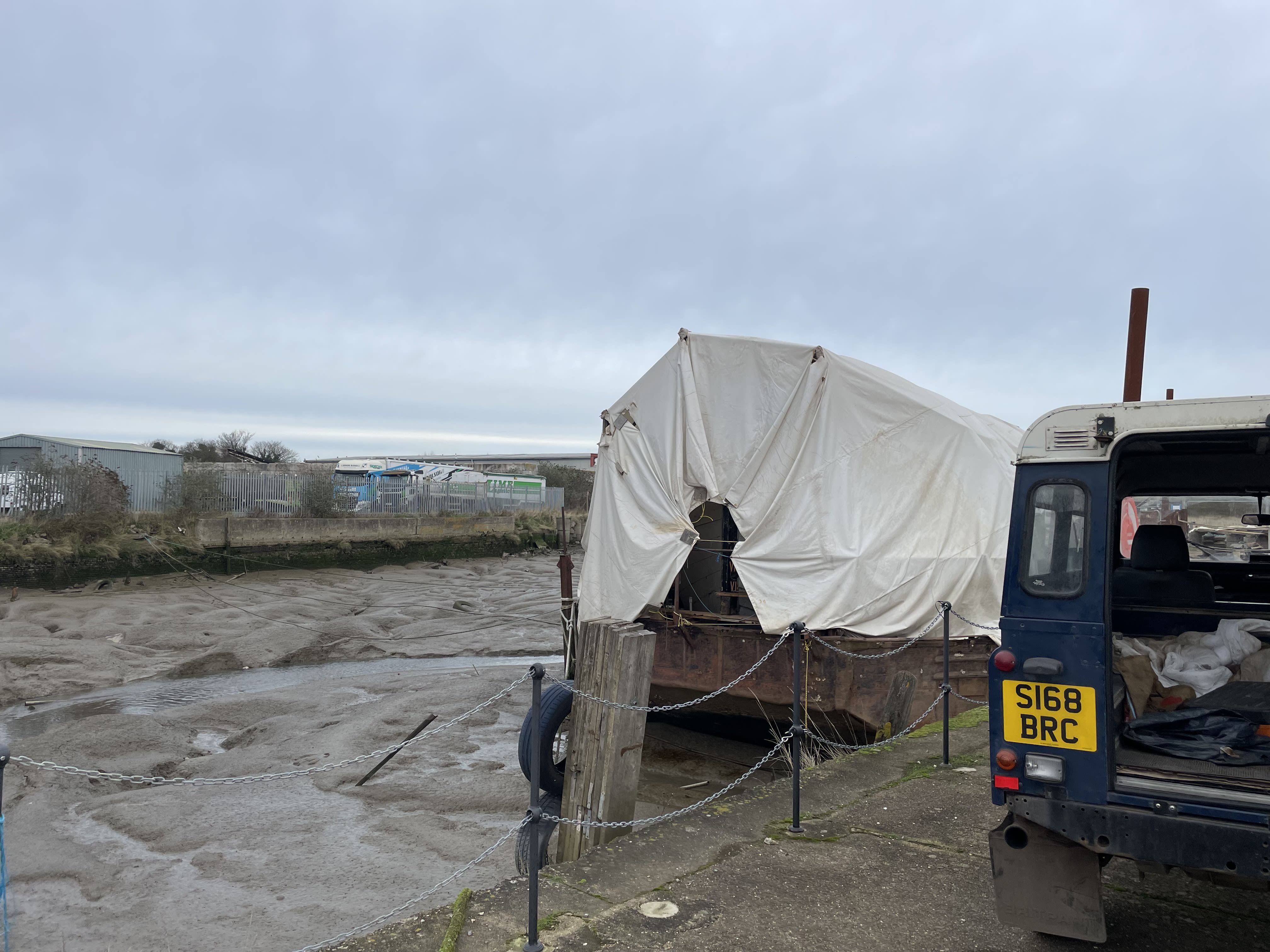
The Raybel is expected to be fully operational next year | Credit: Floris de Bruin
The Raybel is expected to be fully operational next year | Credit: Floris de Bruin
Traditional sail cargo fleet has gone from three ships in 2009 to over ten vessels in 2020 according to Raybel Charters.
But how feasible is wind-powered cargo shipping in the global context?
Mr Foster said: “We’re not just talking about wind-powered cargo; we’re making it happen. Come on then! It’s possible.”
“We’re doing it by doing it,” he added.
Rethinking trade
Raybel Charters is a member of the Sail Cargo Alliance, a network of farmers, sailing ships, traders and port enterprises delivering food and drink across seas and oceans, emissions-free.
The Alliance prioritises organic, nature-friendly and fairly traded produce from small-scale farms and co-operatives, packaged and shipped to minimise waste and single-use plastic.
Raybel Charters partners with small-scale community producers and family farms in Colombia, the Caribbean, Portugal, and France.
Goods such as coffee and chocolate are sailed into Sittingbourne via the French ship De Gallant, and soon the Raybel will complete the final leg into London.
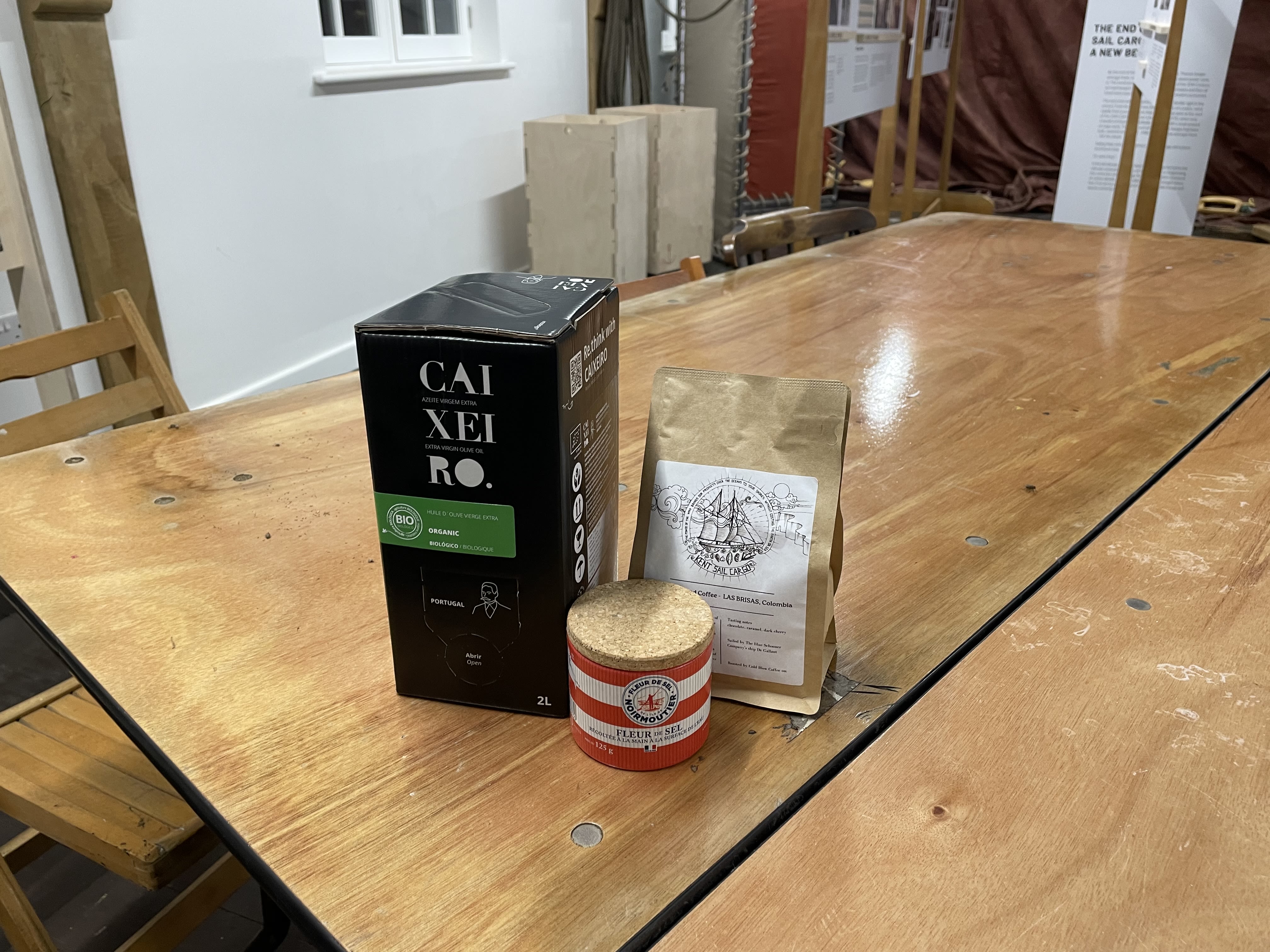
Raybel will transport goods like chocolate, coffee and salt | Credit: Floris de Bruin
Raybel will transport goods like chocolate, coffee and salt | Credit: Floris de Bruin
The aim is to simplify the distribution network – farmer to sailor to trader to customer – to keep the supply chain short and ensure maximum transparency, as opposed to the anonymity imposed by huge container ships.
Mr Foster said: “When we bring a product in, people can come directly to the ship, they can meet the French sailors that have been to the Caribbean, they can hear those songs, they can sample the things they buy, they can see the coffee coming off, they’re in contact with that.
“Container ships, on the other hand, are all anonymous. Most people don’t see it. You can’t go to Tilbury docks and walk around and see what’s going on there. Who knows what’s going on there?”
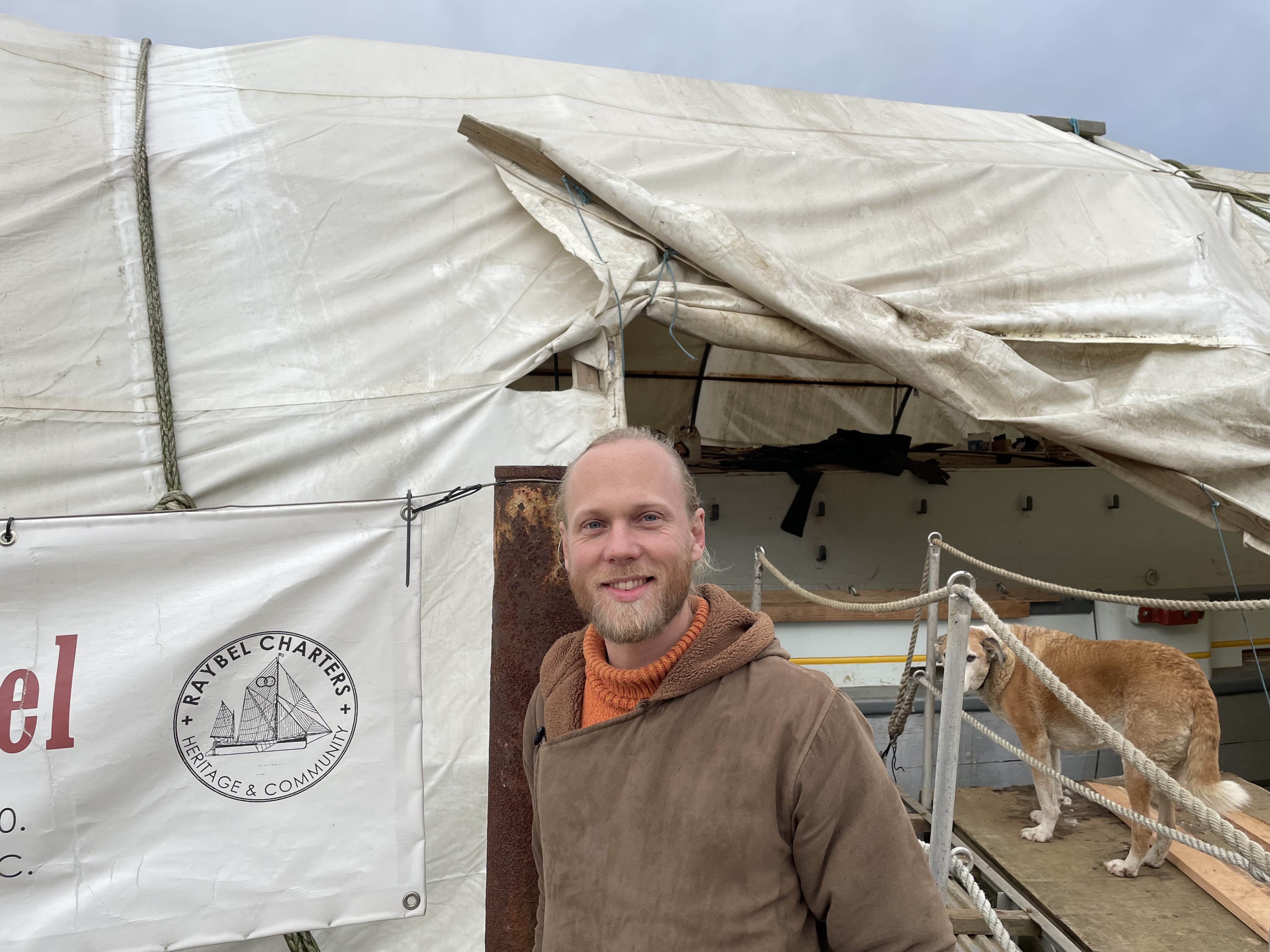
Chris Foster envisions a return to the traditional marketplace | Credit: Floris de Bruin
Chris Foster envisions a return to the traditional marketplace | Credit: Floris de Bruin
The stark comparison between anonymous container ships and the accessible harbours of the past underscores their mission to reshape the culture of shipping.
Mr Foster added: “It shapes the culture of a place. Tilbury docks is a faceless, industrial, machine. You can’t even get in contact with it – it’s a machine.
“Whereas ports and harbours used to be this amazing place of cultural exchange.
“Harbours used to be ecosystems that had contact with international cultures and so they became this place of music, ideas, cuisine, all of this potential for interaction.
“What kind of cultural renaissance is happening at Tilbury docks?”
Beyond Restoration
Beyond shipping, Raybel Charters aims to revive Sittingbourne’s waterfront and create a space for the community to engage and interact.
Part of this mission involves regenerating the creek’s ecology, which was once host to a “thriving fish population” according to Mr Foster, by replanting native seagrass.
Mr Foster said: “We feel responsible – if we’re here, bringing cargo in, restoring a barge, and we’re in contact with the community.
“We feel responsibility to take care of this.”
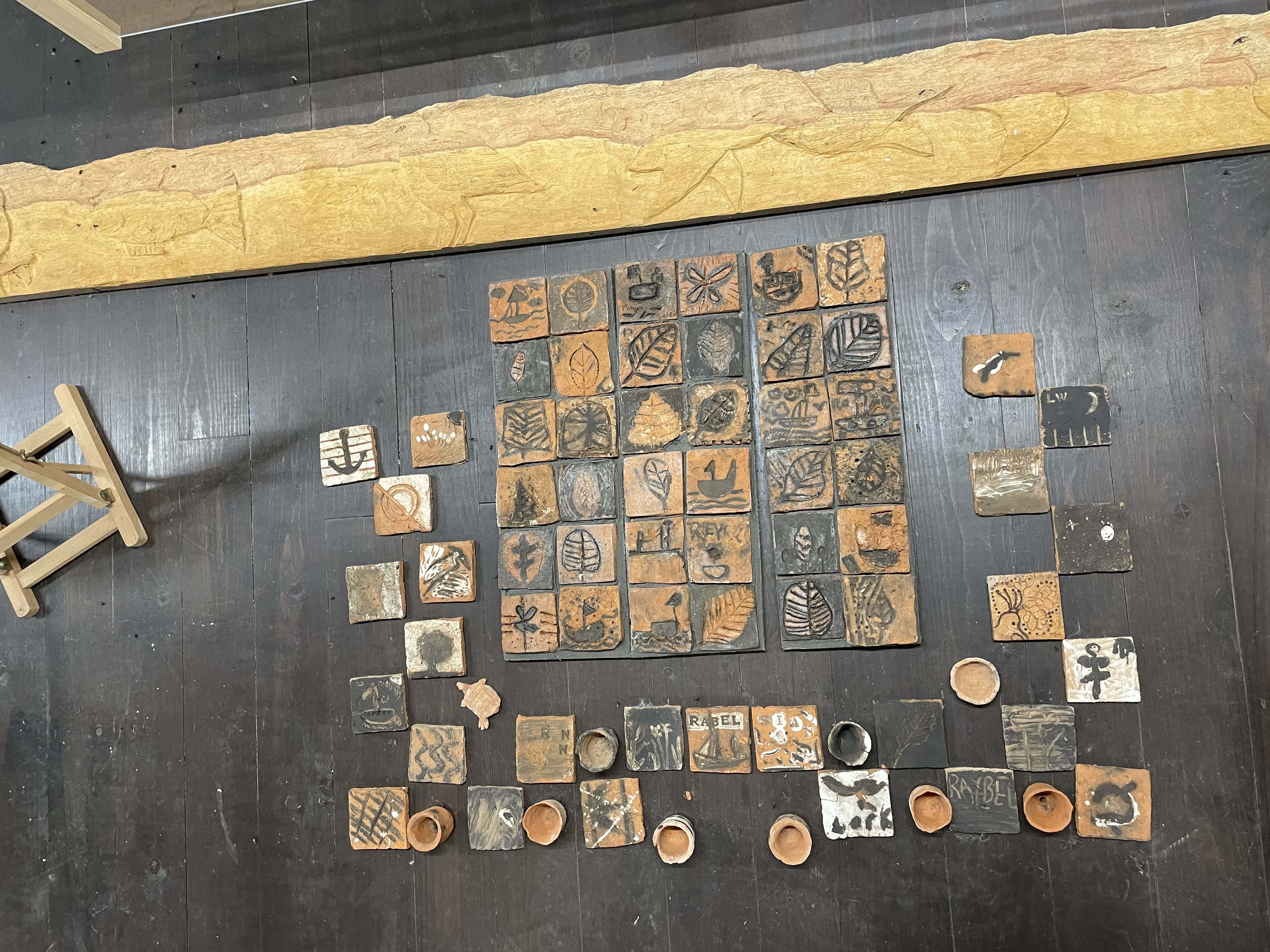
Students' arts and crafts work | Credit: Floris de Bruin
Students' arts and crafts work | Credit: Floris de Bruin
The wharf also serves as a place to host community events, such as gardening and arts and crafts, welcoming local schools.
Mr Foster said: “In the long-term vision, we could really see the whole wharf being revived. We could have shipwrights, traditional craft involved. There’s a lot of potential.”
Sailing on
The next phase of Raybel’s life – as she goes into a second century – is slowly taking shape as she becomes a community barge for Sittingbourne, and as a cargo-carrying vessel once more, as part of the international sail cargo network.
